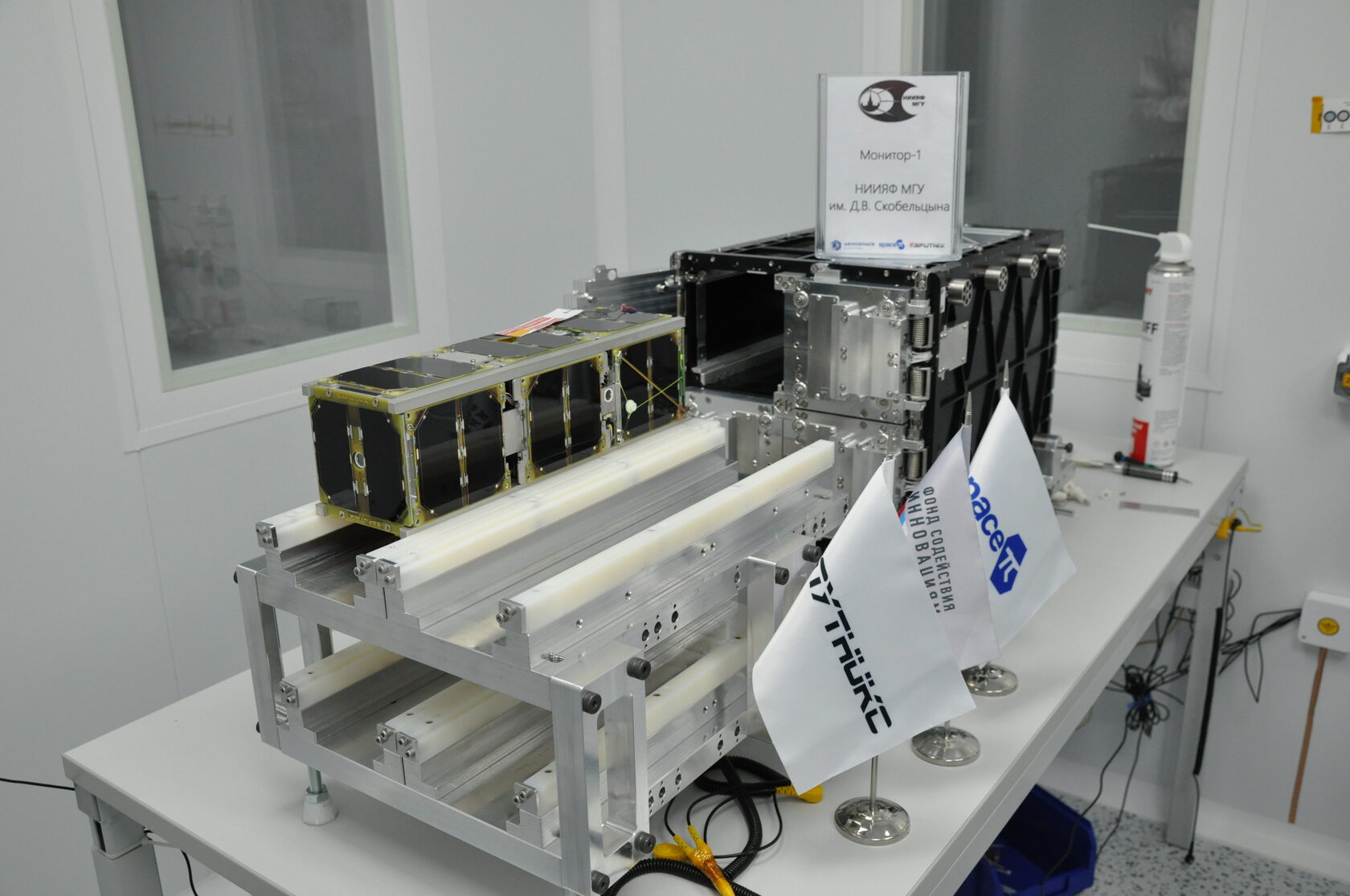On Saturday, March 23, 2024, at ~01:30:00 UTC, the Monitor-1 spacecraft completed its work. Under the Space-Pi project this the CubeSat-3U satellite was launched into orbit by a Soyuz-2.1b rocket on August 9, 2022. During the entire period of its existence (592 days) the small spacecraft was monitored by the operators of the MCC of Moscow State University and radio amateurs, until it entered the Earth's atmosphere.
The KODIZ device was installed on the ICA board. It was developed by the team of the Radiation Monitoring Laboratory M.V.Lomonosov Moscow State University, Skobeltsyn Institute of Nuclear Physics (SINP MSU) and by the students of the Department of Space Physics, Faculty of Physic. It became the first device of the team created specifically for the CubeSat satellite format.
KODIZ, a combined radiation detector, was designed to monitor near–Earth space in order to detect the appearance of a stream of particles of solar cosmic rays capable of creating an additional radiation load on board high-altitude aircraft. In addition, the device was used to develop technical means for registering cosmic radiation suitable for use on small spacecraft in real space flight conditions.
The Monitor-1 satellite has successfully completed all the scientific and technical tasks. Based on the results of equipment operation:
A large amount of data was received from the ICA, which will continue to be processed by the researchers and students. Also, the results of technical developments will form the basis for the following laboratory devices.
The experience gained during the operation of Monitor-1 will be used in further development of other satellites of the “Constellation-270” project.
The MCC team in MSU currently manages the Monitor-3 and Monitor-4 satellites, controls the Monitor-2, Avion-Kaluga-650 and Saturn satellites, and also receives data from other ICA partners.
The scientific and educational spacecraft Monitor-1 was launched as part of the Constellation-270 and Space-Pi projects with the support of the Innovation Promotion Foundation. The team also thanks the developer of the MKA satellite platform, “Sputnix”, for their cooperation.
The KODIZ device was installed on the ICA board. It was developed by the team of the Radiation Monitoring Laboratory M.V.Lomonosov Moscow State University, Skobeltsyn Institute of Nuclear Physics (SINP MSU) and by the students of the Department of Space Physics, Faculty of Physic. It became the first device of the team created specifically for the CubeSat satellite format.
KODIZ, a combined radiation detector, was designed to monitor near–Earth space in order to detect the appearance of a stream of particles of solar cosmic rays capable of creating an additional radiation load on board high-altitude aircraft. In addition, the device was used to develop technical means for registering cosmic radiation suitable for use on small spacecraft in real space flight conditions.
The Monitor-1 satellite has successfully completed all the scientific and technical tasks. Based on the results of equipment operation:
- A sample of a compact, multi-detector system for the detection of cosmic radiation, based on a commercially available microcontroller, has been manufactured and tested under flight conditions;
- A comparison of the SCL streams recorded on Monitor-1 and on GOES-16 following the flashes have been obtained;
- The possibility of using SiPM photodetectors as an alternative to PMT for recording Cherenkov radiation has been tested;
- Using a compact detector based on CsI crystals and SiPM photodetectors has been worked out;
- Using of lithium glasses for the registration of neutron fluxes has been experimentally tested.
A large amount of data was received from the ICA, which will continue to be processed by the researchers and students. Also, the results of technical developments will form the basis for the following laboratory devices.
The experience gained during the operation of Monitor-1 will be used in further development of other satellites of the “Constellation-270” project.
The MCC team in MSU currently manages the Monitor-3 and Monitor-4 satellites, controls the Monitor-2, Avion-Kaluga-650 and Saturn satellites, and also receives data from other ICA partners.
The scientific and educational spacecraft Monitor-1 was launched as part of the Constellation-270 and Space-Pi projects with the support of the Innovation Promotion Foundation. The team also thanks the developer of the MKA satellite platform, “Sputnix”, for their cooperation.

